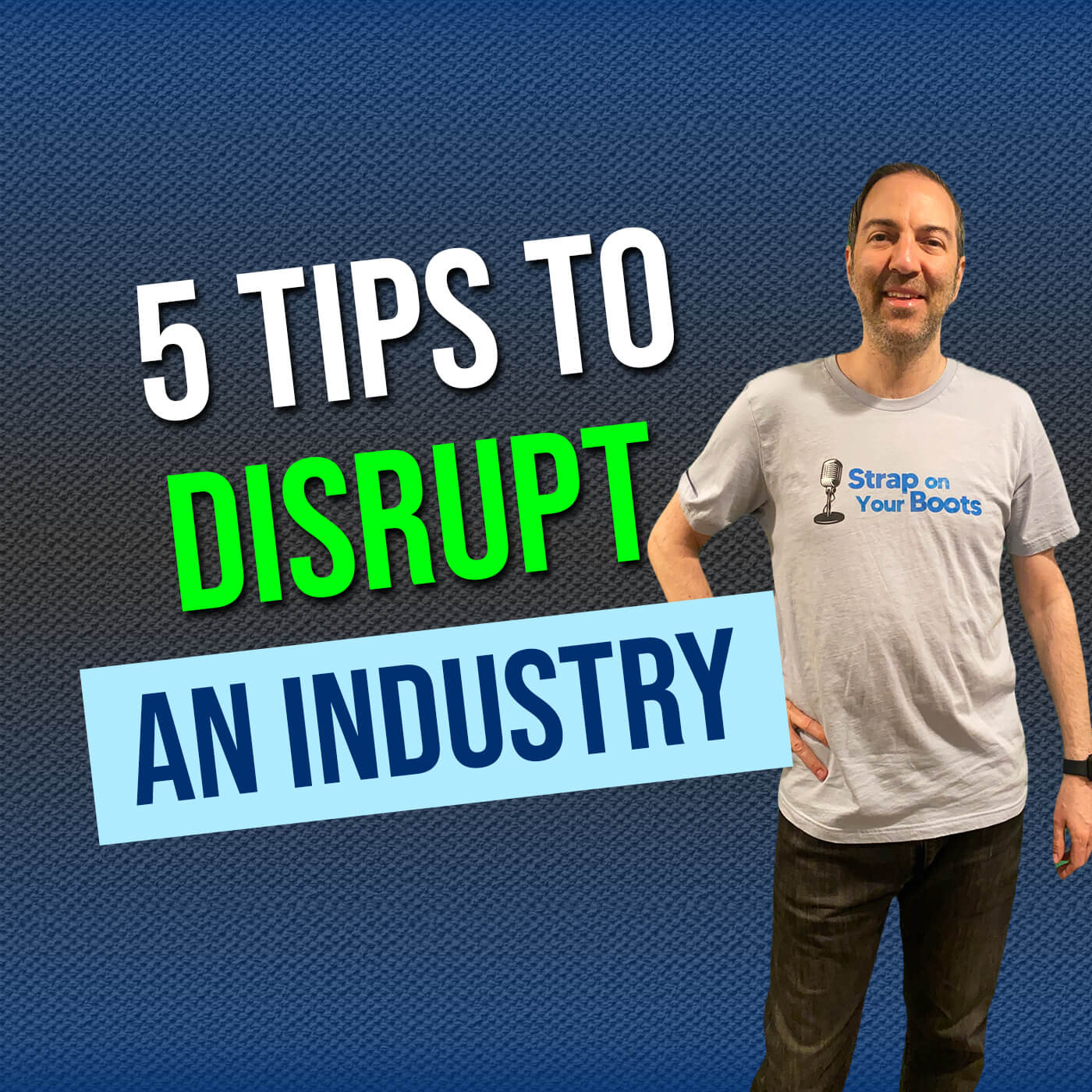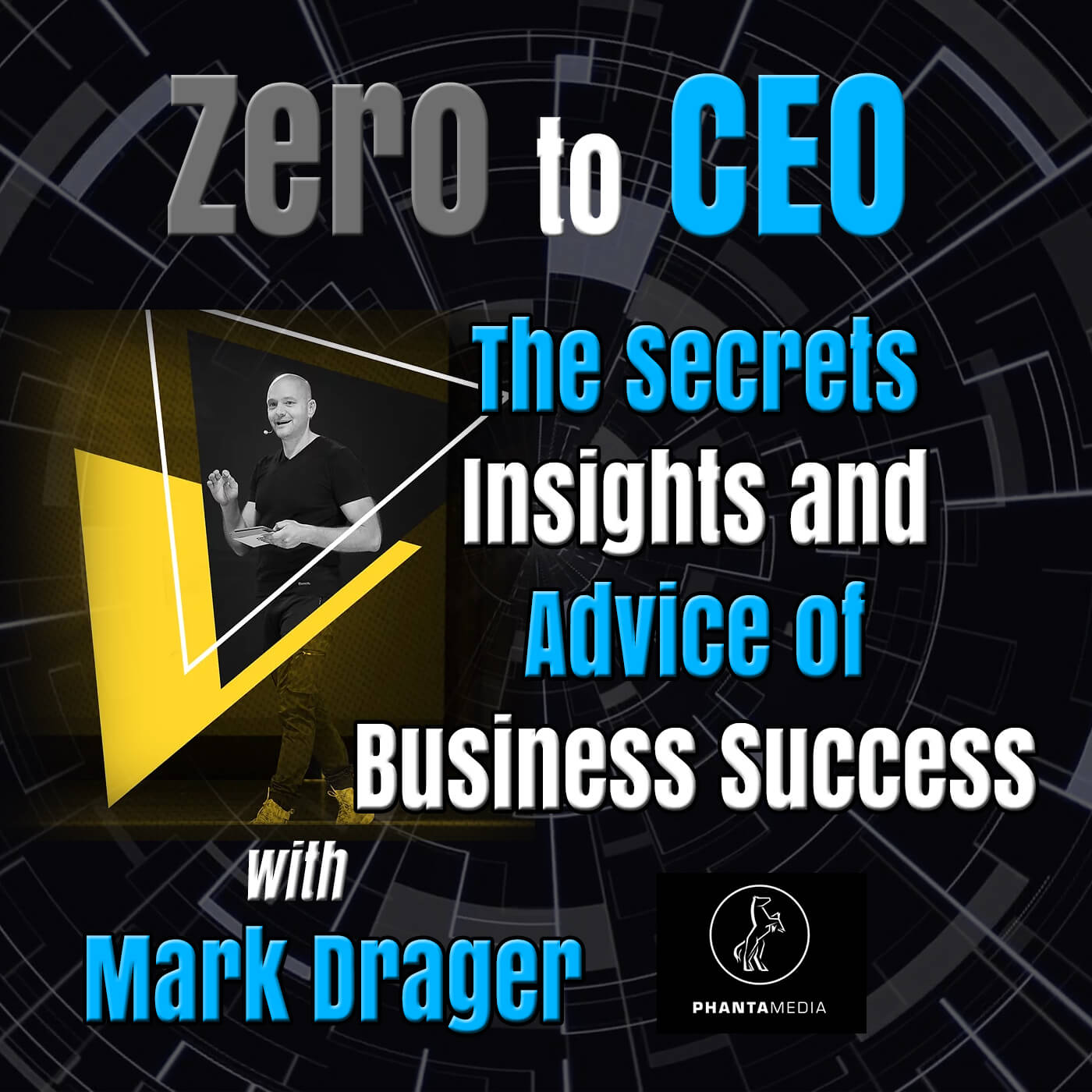5 tips to disrupt an industry

In this episode, I talk about how to disrupt an industry. This episode is extremely relevant because I recently launched an app called Spinnr, which is a short form video app to help people meet new friends based on hobbies, interests, so you can engage in fun activities together. I feel like our app is really disrupting the social environment of friendships, matchmaking, hobbies, and group activities. I’m not going to talk about the app that much in the episode, but I did want to mention why this episode is so important. Because I’m implementing the 5 tips I mention every day in my own app!
This episode is sponsored by the world’s first productivity shot, Magic Mind. Pick some up at magicmind.co/boots and use my code BOOTS to get 20% off your order or 40% off your subscription within the next 10 days!
Listen to the Podcast episode here:
Or Watch the Video here:
Here’s the transcript from this podcast episode, please excuse any typos!
So I’m going to give you the five tips that I personally use when I want to disrupt an industry and build something new. Number one, it doesn’t happen overnight. This isn’t really a tip, it’s more about common sense. A lot of people think, Oh, I have the next billion dollar idea, it’s going to disrupt Instagram, or it’s going to disrupt YouTube, or it’s going to completely destroy Facebook, but it might not work, right? It might take you years, it might take you 456 Other ideas until you finally find the one that actually does disrupt the industry that you’re trying to disrupt. So don’t think about it so much as this is the one. Think about it more like this is the path that I have to take over and over again until I finally do find the one. And the reason I say this is because if you look back in history, a lot of entrepreneurs or businesses failed many, many times until they finally found the right one that worked for them. A lot of companies that we know and love or loathe started out as something else. And then they pivoted and became what we know today. So once you’ve accepted the fact that just like Thomas Edison took 10,000 tries till he finally got the light bulb, that’s going to possibly take you years to figure out where you know where your disruption is going to be. To give yourself a better chance.
Tip number two is something I was told by Peter Thiel in an elevator pitch. So back during my journalist days when I was working in the tech industry, I actually had a chance to pitch Peter Thiel in an elevator for one of my ideas like a decade ago, and he liked the idea. And he mentioned, do you know how you disrupt an industry, he told me, I said, Tell me, tell me, Oh, Master. And he said, you find something that people are overlooking. And that kind of sat with me for a while. And I thought about it again. And again. And again. The reason he said this, and this is why it’s so important, is that a lot of people see the success of a certain kind of platform or a certain industry. At one point it was social media. At another point, it might have been video, at another point, it might have been the coupon websites, there was a lot of competition, then there was like the Drive sharing, right, Uber and Lyft. And then a whole bunch of other ones came out. So people try to jump into something that’s successful to replicate it. That’s the wrong way to look at it. He mentioned the overlooked industry. So you find something that might not be as sexy, it could be accounting, it could be, you know, cable management, I don’t know, anything that people don’t want to look at. And no innovations have happened in a decade or 20 years even focus on that. So how do you do that? Well look at an industry that has a couple of players in it. And they haven’t changed anything in 1020 years, you’ll find people are tired of those platforms or those products, they haven’t been fixed or made better. They haven’t been enhanced, because the companies don’t want to if it ain’t broke, don’t fix it as the old saying, right. So you have to find that industry or that market that people are not fixing are not making it better. And that’s your market, that’s your target. That’s your disruption, you disrupt something that people have not been looking at for 10–20 years. Shameless plug. But in the case of Spinnr, people haven’t tried to fix online dating platforms for 20 years, people haven’t tried to give purpose to video platforms. meetup.com. And a lot of other group oriented websites are slow, clunky and not really, you know, up with the times, they’re very kind of antiquated. Spinnr brings all of them together into a very unique, simple short package that makes it very easy for people to use, and get to know each other quickly. So we’re trying to disrupt many markets that people have been overlooking all these years, you can do the same thing.
And the best way to do that is tip number three, which is hiring super smart people to work with you and help you disrupt the market. Because again, this is just your idea. You might have several ideas of how to disrupt the market or how to build a platform or a product that can be better than what’s out in the industry. But you need people around you who also see the same vision you do, and can help you make it even better, where they might see ways of doing things differently than you thought of. And so the more talented and smart people you bring on board, the better your idea will become, and the more successful it will be.
And one of the biggest mistakes that people make, and this is tip number four, is they launch their product or their platform nationwide, like let’s just get everybody to start using this thing. And there’s something called the chicken in the egg syndrome or catch 22, where you need people to use or be on this platform or product in order to get people to want to use it. Because if you just start promoting it everywhere, and someone from California is on your platform, and then someone from New York is on your platform, they probably can’t really relate to each other, because they are from completely different coasts. So you want to hyper focus, geo localize your idea, your platform, your product, in your city, you know, I’m in Philadelphia, so for me, it’s all about getting people to use my platform in Philadelphia, New Jersey, New York, that tri state area, so that we can get, say, 1000 to 10,000 people in the localized area to use the product so that they can actually meet in person. So you have to hyper localize, and geo localize your idea first, before you start expanding. But when you are ready to expand, you have to expand quickly. Because as you start to grow, and if you do have a lot of people on your platform, you’re going to want to tap into the next cities very, very quickly, so that they can just kind of just jump on. But you do this through advertising and marketing. So it’s all about where you are posting your ads? Where are you posting your marketing, localizing it, opening it, major city by major city, and I would start with wherever you are, and then start at the other end of where you are. So for example, for me, it’s California, then move into like, you know, Las Vegas and Chicago and Texas, and New Orleans and Florida and kind of work my way in so that both coasts meet in the middle. That’s the way to do it. And if you do that, you’ll notice that you can expand properly quickly and without worrying about the chicken or the egg situation.
And my last tip number five is something that people always ask and you know, it just comes with the territory, I have to get used to it by now it’s how do you make money? How does the app make money? How does the platform make money? And I’m here to tell you, you cannot worry about this in the beginning. Because in the end, everybody always says, oh, I’ll just put ads on my platform. Like I’m not putting ads on my platform. You have to monetize and earn revenue in some way, of course, because investors if you plan on getting investors, unless you’re already wealthy, you don’t need people’s money to give you. You’re gonna need to make money in the future. But if you start to, if you start the app, or the platform, or whatever the idea is, with people having to spend money right off the bat, like Oh, pay for this feature and premium upgrade for that. And here’s ads to click on and all that crap, you’re going to turn away your audience. If you were to download Spinnr today and try it out, you’ll see there are zero ads, zero features where you have to pay for anything, everything is free. As a matter of fact, you earn coins on the app that you can spend in the app, so you don’t have to spend money. And we’re giving people a free premium for life if they see the first 10,000 people. So we’re giving these incentives, if anything, we’re attracting people by not charging them for stuff. Now, once you reach a large amount of users, let’s say 1 million users, which is the lucky number, the golden number, if you can meet your million users on your platform, then you can start to introduce slowly some premium upgrades and in app purchases and features like that, and our app does have in app purchases, but we’re not expecting anybody to pay for anything in the beginning. Because they’re just not going to be free. They can pay if they want, but we’re not expecting it. So don’t expect anybody to pay for anything in your app. Expect to get as many users as you can because guess what users are gold users or data users are important. Investors want to know, how many users do you have? How many users are you growing month over month? What’s the percentage? And then yes, how much revenue are you earning, but that’s going to be later on. So focus on the product, not the profit. And those are my five tips. Hopefully they helped you out. If you have any other information or tips or suggestions or feedback on how you can disrupt an industry. I’d love to hear it. Leave them in the comments. I always get back to you as soon as I can. And as always, I’ll see you in the next episode.
![]()






